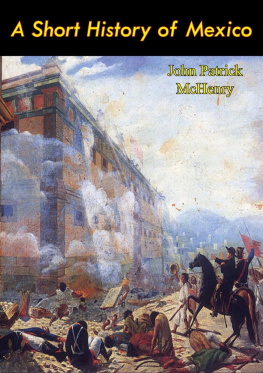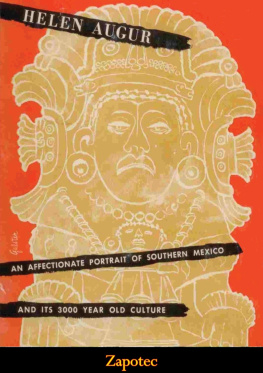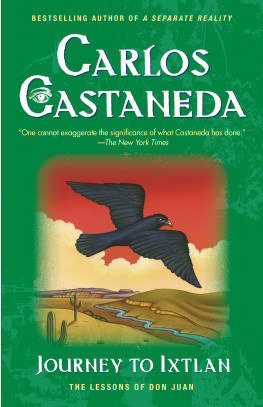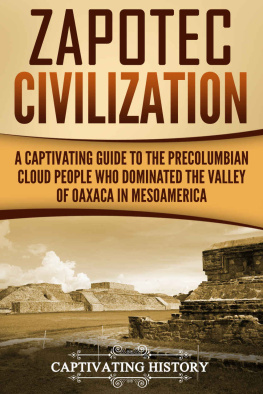2007 The University of North Carolina Press
All rights reserved
Designed by Heidi Perov
Set in Arnhem Blond by Tseng Information Systems, Inc.
Manufactured in the United States of America
This book was published with the assistance of the Anniversary Endowment Fund of the University of North Carolina Press.
The paper in this book meets the guidelines for permanence and durability of the Committee on Production Guidelines for Book Longevity of the Council on Library Resources.
Library of Congress Cataloging-in-Publication Data
McNamara, Patrick J.
Sons of the Sierra : Jurez, Daz, and the people of Ixtln, Oaxaca, 18551920 /
Patrick J. McNamara.
p. cm.
Includes bibliographical references and index.
ISBN-13: 978-0-8078-3078-9 (cloth : alk. paper)
ISBN-13: 978-0-8078-5787-8 (pbk. : alk. paper)
1. Zapotec IndiansWarsMexicoIxtln. 2. Zapotec IndiansMexico IxtlnPolitics and government. 3. Zapotec IndiansMexicoIxtln Government relations. 4. Peasant uprisingsMexicoIxtln. 5. Daz, Porfirio, 18301915Relations with Zapotec Indians. 6. Jurez, Benito, 18061872 Relations with Zapotec Indians. 7. MexicoHistoryRevolution, 19101920. 8. Ixtln (Mexico)Politics and government. 9. Ixtln (Mexico)History 20th century. I. Title.
F1221.Z3M375 2007
972.74059768dc22
2006048556
cloth 11 10 09 08 07 5 4 3 2 1
paper 11 10 09 08 07 5 4 3 2 1
Table, Map, and Illustrations
TABLE
Mine Claims in Ixtln District, 1879, 1900, and 1903
MAP
Ixtln District, Oaxaca, ca. 2000
ILLUSTRATIONS
General Porfirio Daz, 1867
Benito Jurez
Soldiers from Ixtepeji, 1910
Acknowledgments
As I began the research for this book, I made an appointment with a prominent Mexican historian to introduce myself and seek any advice she might offer. When we met in her Mexico City office, I handed her some letters of introduction from historians she knew in the United States, and then I started to explain my interest in Zapotec communities in Oaxaca. As soon as I said Oaxaca, she interrupted and said in English (and in a rather loud voice as I remember), Dont you people know we have other states in this country besides Oaxaca? I dont remember the rest of our brief meeting. I have thought often of that encounter as I continued to research and write, and I am thinking of it again as this book is going to press. At first I thought she was just tired of meeting another scholar from abroad who had discovered one of the best places to work and live in Mexico. Later I realized that by mentioning Oaxaca as my starting point, it was easy for her to assume that I saw Mexico in somewhat clichd termsas the combination of indigenous and Spanish cultures that is omnipresent in Oaxaca, or, as I describe it more fully in the book, as a living museum where tourists travel to experience Mexicos lost past. Eventually, however, I came to appreciate her comment as a challenge to write a more unexpected history, to see Oaxacas place in national history in a new light. Ironically, if I have succeeded at all, it is due to the exceptional work of many other scholars in and outside of Mexico who have written about Oaxaca before me.
Francie Chassen-Lpez is at the top of that list of scholars whose work has helped me understand the complexity of Oaxaca. In addition to sharing her long list of publications in both English and Spanish, Francie has read this manuscript at least twice and has generously offered extensive advice. She has tried to keep me from making errors, and those that remain are despite her best efforts. More than anyone I know, Francie unites the community of scholars working inside and outside of Oaxaca. I was introduced to her by Howard Manny Campbell, another Oaxacan specialist, who has continued to inspire me by his dedication to working and living in Mexico. I am grateful to Manny for several times picking me up at the airport in Ciudad Jurez, sharing a few beers on the border, and then delivering me to the airport in El Paso for connecting flights. Francie and Manny introduced me to the close-knit group of historians working in Oaxaca. Professors Anselmo Arellanes Meixueiro, Hctor Gerardo Martnez Medina, Vctor Ral Martnez Vsquez, Francisco Jos Ruiz Cervantes, and Carlos Snchez Silva have provided help at various points in this project. These individuals have rewritten Oaxacan history and in the process organized archives throughout the state that have helped so many other scholars. I benefited directly from these efforts during my time at the Archivo General del Estado de Oaxaca in Oaxaca City. The archivists there were incredibly patient with my requests and generously allowed me to work at a desk closer to the stacks so that I could occasionally dig for documents on my own. Also in Oaxaca City, Itandehui Gutirrez Yaiz at the Biblioteca Pblica de Oaxaca, Sala de Genaro Vsquez, provided helpful guidance through the manuscripts of Manuel Martnez Gracida.
I am most grateful for help I received from numerous people throughout the Sierra Zapoteca. Most important were Vctor Ramrez Hernndez and his family, who welcomed me into their home, invited me to family gatherings, and told me stories about their community of Ixtln. I would also like to thank Luvia Mendoza Bautista of the Biblioteca Pblica de Guelatao, Jaime Luna of the Trova de Guelatao, Arrn Cruz Luna from the Museo Comunitaria Minereo de Natividad, and the entire Ixtln town council, which gave me permission to work in its municipal archive in 2001.
As much as I would have liked to work full-time in Oaxaca, most of my archival research was carried out in Mexico City. By far, the most important place for me was the Coleccin Porfirio Daz (CPD) at Universidad Iberoamericana. The archivists and staff at the CPD, especially Mara Eugenia Patricia Ponce Alocer, made the long journey to get there worthwhile and comfortable. They allowed me to work with the original documents and hired a student full-time to make photocopies at my request. I cannot think of working at the CPD without also thinking of Glen Kuecker, who worked on the other side of the table, found half of the documents I used in this book, asked me hard questions during our breaks, and made the long hours in Santa Fe enjoyable. I am grateful for his friendship and advice.
Over the years I had the pleasure of working in Mexico surrounded by a group of exciting (and now not so young) scholars. Jane Erickson, Jeremy Baskes, and I shared long conversations about Oaxacan and Mexican history from the vantage point of the Bar Jardn on the Zocalo in Oaxaca City. Matthew Gutmann, Susie Porter, Eric Zolov, Paul Hart, and Glen Kuecker transformed the worlds largest city into a familiar circle of friends. Linda Arnold shared her unsurpassed expertise in the archives at both the Archivo General de la Nacin and the Archivo Histrico de la Defensa Nacional. In particular, the documents came much faster after the soldiers/archivists at Defensa saw that Linda was helping me.
Archivists in Mexico City graciously allowed me to work with documents that truly represent Mexicos rich national treasure. Individuals at the Archivo General de la Nacin, the Biblioteca Nacional, and the Centro de Estudios de Historia de Mxico greeted my requests with professional courtesy and polite cooperation. Research funding has come from a Grant-in-Aid of Research at the University of Minnesota, a McKnight Summer Fellowship for the Humanities, a Faculty Summer Research Fellowship of the University of Minnesota, a Fulbright-Hays Training Grant from the U.S. Department of Education, and a Latin American and Iberian Studies Program Field Research Grant from the University of WisconsinMadison.








